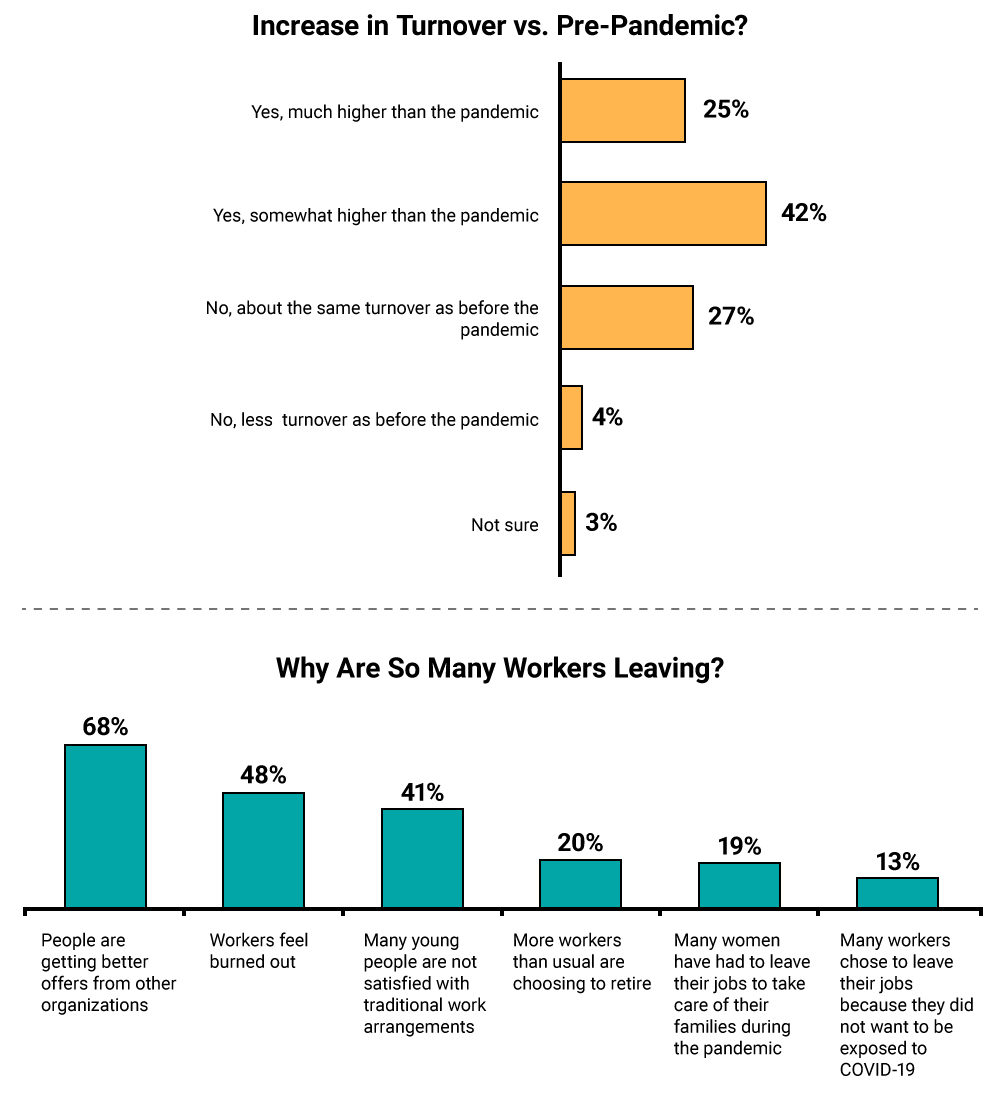HR Confronts the “New Normal”
MindEdge/HRCI’s Joint Survey: HR and the Changing Workplace

With many businesses hiring at a healthy clip, the American economy is gradually easing its way back to normal – or at least the “New Normal.” The traditional workplace has been transformed in the last couple of years, both by the widespread adoption of remote work and by the accelerated employee turnover triggered by the “Great Resignation.” HR professionals are only now starting to come to grips with these profound changes.
The results of MindEdge and HRCI’s third annual survey, HR and the Changing Workplace, show how many organizations are adapting to the changing workplace landscape. Most have adopted a hybrid work model – a fact that seems popular with many workers, but which creates challenges for the people tasked with recruiting and hiring remotely. And organizations must also contend with accelerating employee turnover and high levels of worker burnout.
MindEdge/HRCI’s national survey of more than 1,000 experienced HR professionals – those with an HRCI certification of PHR or above – was conducted online from October 5 through 14, 2022. The top findings: 67% of respondents say that turnover is higher than before the pandemic, and 68% say they face a serious problem in losing employees who accept a better offer from a competitor. To combat high turnover, organizations are offering more flexible work arrangements, enhanced benefits, and higher pay.


The survey results illustrate the causes of the current turnover crisis, and how many organizations have chosen to respond to it. In the first two charts, 25% of respondents say that employee turnover is much higher than before the pandemic; 42% say it is somewhat higher; 27% say it is about the same; only 4% say it is lower than before the pandemic; and 3% are not sure. The top reasons for high turnover: 68% of respondents say workers are leaving to accept better offers from competing organizations; 48% blame employee burnout; 41% say that younger workers are leaving because they are dissatisfied with traditional work arrangements; 20% blame a larger-than-usual number of retirements;19% say that women had to leave their jobs to take care of their families during the pandemic; and 13% cite the number of employees who quit because they did not want to be exposed to COVID-19.
The last chart shows how organizations are adapting to meet the rise in employee turnover. The most common response: 66% of respondents say their organization has already introduced more flexible work arrangements, and another 4% say they plan to make this change. In addition, 49% say their organization has already increased compensation, and another 14% plan to do so; 51% say their organization has already introduced benefits to help employees cope with stress, and another 11% plan to do so; 39% say their organization has already begun providing job-skills training as an employee benefit, and another 11% plan to do so; 11% say their organization has already increased the use of advanced automation, and another 8% plan to do so; 7% say their organization has begun to help employees pay for child care, and another 2% plan to do so.

